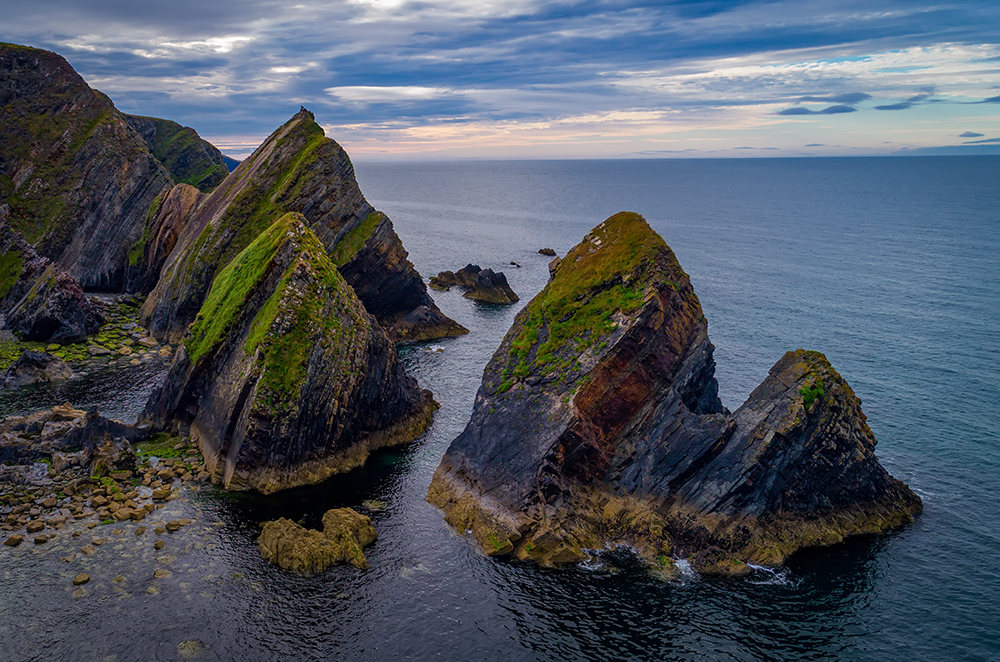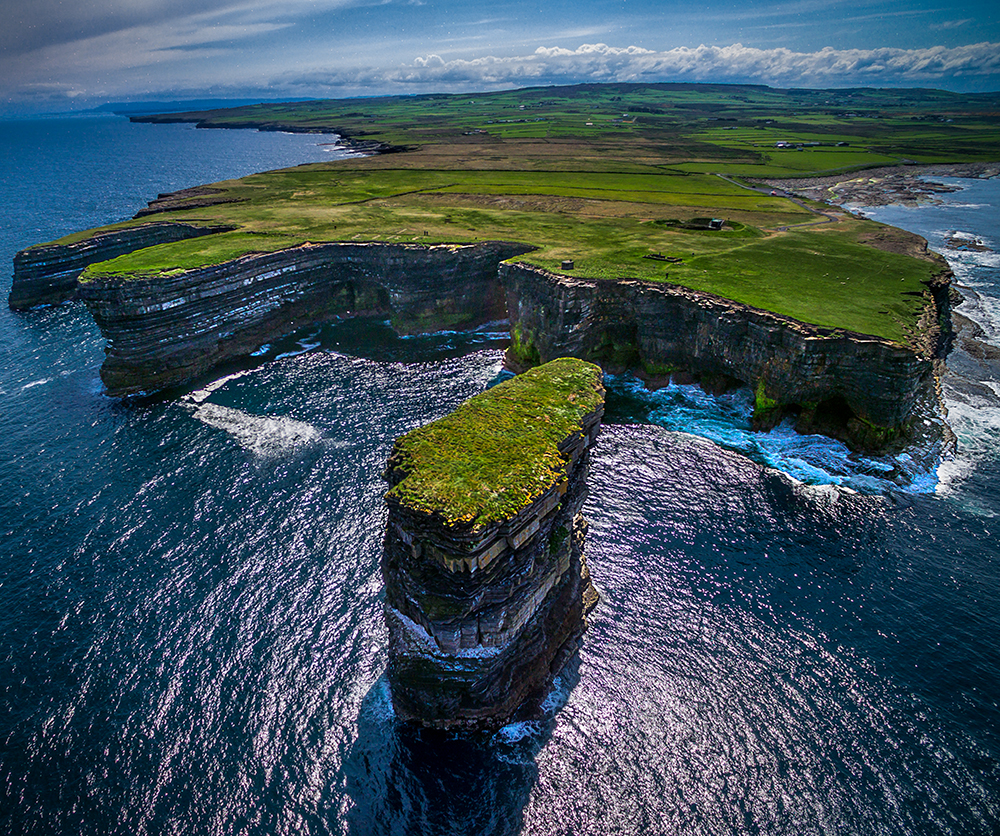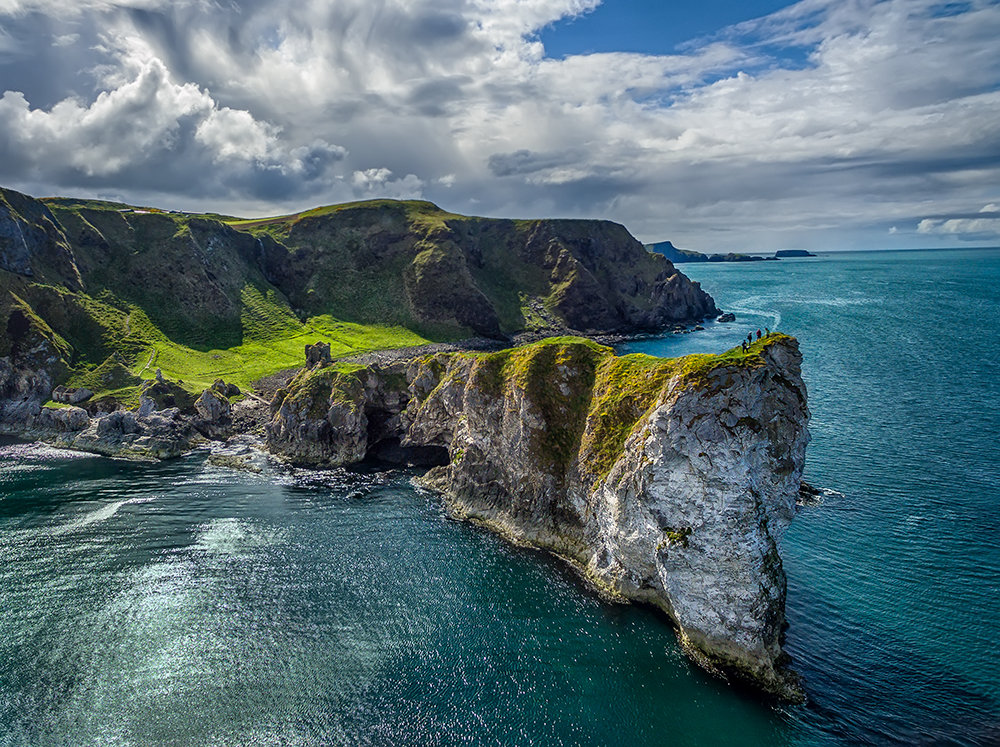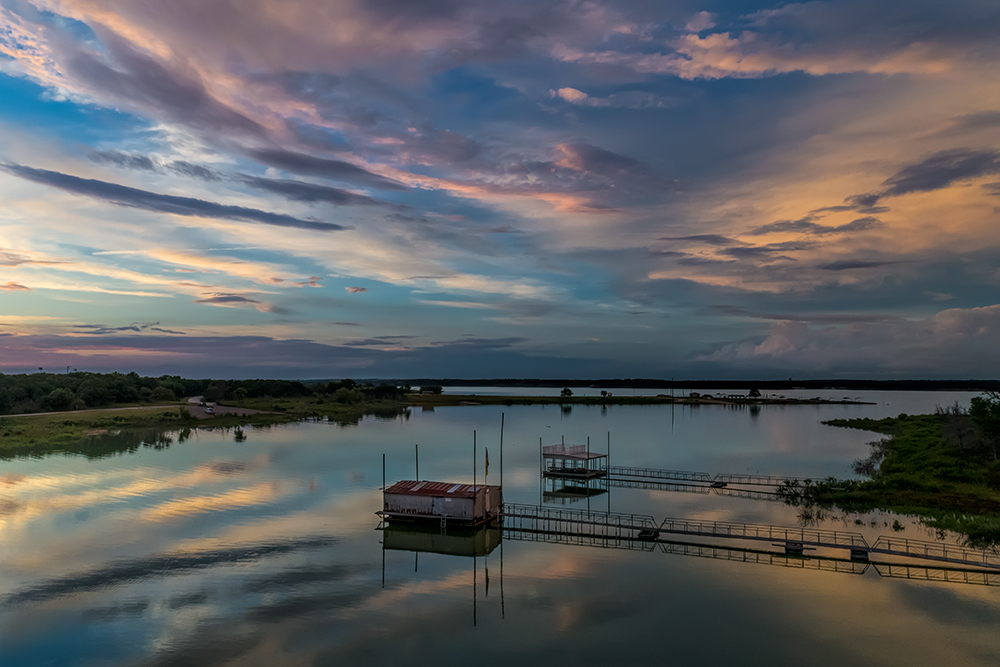
I just returned from Ireland, where I spent two weeks photographing the countryside and coastline. While I was there, I had something of a revelation. I realized that, if I was forced to choose between bringing only my trusty DSLR or my drone, I’d choose the drone.
That surprised me. I never planned on getting involved with drones. I only bought one because I thought they would add something to my coastal photography (that being that I could use the drone to shoot back toward the coastlines. The more I have used drones, however, the more I have come to value what they can do. You can get any shot from any angle or perspective. As such, I really cannot recommend them more strongly.
We’re all really just scratching the surface of what drones can do at this point. Most drones are conceived and built for video, and the idea of using them for still photography (while certainly out there) hasn’t really been pushed. When you look at collections of photos taken from drones, there are a lot of shots looking straight down. Like I said, my only thought was to get shots looking back at coasts. But the fact is that you can use drones to access virtually any place or perspective you want. In fact, you don’t even have to go very high up in the air. You can shoot from eye level if you want.

This may all be pretty obvious to you, but at the same time, you probably have reservations. In fact, I’m sure many of you are already tuning me out. You’re probably thinking it is too expensive, or too complicated, or just something you don’t want to mess around with. I had the same reservations, but I have found that most of them are 100% unfounded. So just bear with me a little while. Let me walk you through a few reasons why I think you shouldn’t hold back from getting a drone at this point.
Objection No. 1: Drones are Too Expensive
First – and in many cases, foremost – is the notion that drones are too expensive. So let’s talk about that right away. Are drones expensive? It really depends on how you look at it. “Expensive” means different things to different people.
Before talking about what is “expensive,” let’s take an objective look at what you can expect to spend. I’ll use examples of DJI models, since they are the leader in the field right now (but there are certainly other good alternatives out there). If you are just looking to get your foot in the door, you can get a drone for about $500. Obviously it goes up from there. The Mavic 2 Pro, which is the best one within reason, costs about $1,600. From there, the sky is the limit, but I don’t think you need to worry about those more costly options. The point is that you are in the game for $500 and have a state of the art drone for $1,600.
With those numbers in mind, let’s return to the original question. Are drones really expensive? Well, yes. You are talking about several hundred dollars at a minimum. Don’t forget that you will want to get additional batteries and a case as well, which will add a few hundred to the equation. It might be as much as a few grand when it is all said and done.
But at the same time, that really isn’t a lot of money when you look at what we are spending on cameras and lenses. You are probably toting around a DSLR or mirrorless camera that costs at least as much as any of these drones. In some cases, your camera and lens might cost a lot more. These drones come with a camera as part of the package (and you won’t have to/be able to spend more money on additional lenses for it). So the fact is that you are getting a camera that flies for about the same price as what you would expect to spend on a regular camera.
Now, you might object to that idea on the basis that your DSLR or mirrorless camera – while more costly – isn’t liable to fly itself into a tree or a lake. So let’s take a look at that next.

Objection No. 2: I’ll Crash It
Everyone starts out thinking that they will crash their drone. They think that either the drone will have some malfunction that will cause it to fly away, never to return, or that they will simply crash it into something and smash it into 1000 pieces. In my own case, I remember thinking that if I could just get my drone to live through a trip to Ireland (a prior trip, not the one I mentioned at the beginning of this article), then I would be happy and anything beyond that was bonus time. The reality is far different.
First of all, you just won’t crash it. You will stay pretty far away from trees and buildings. The reality is that once you’re about 150 feet in the air, there isn’t much in the sky that is going to get in your way. Therefore, crashing your drone just isn’t the danger you might think it is.
That still leaves the issue of malfunction leading to a crash. But that is not likely to happen either. These things are remarkably reliable. They are also full of safety features that protect against loss. All current models have some form of obstacle avoidance, which will keep you from crashing into stuff. In addition, if there is a problem, the drone will typically just fly itself back to its original take-off point (called the “return to home” function). If the drone loses contact with its controller, it returns to home. If the battery gets too low, it returns to home. Losing or crashing your drone seems pretty unlikely.
Even if that happens, there is insurance. DJI sells a package for about $150 where you can get your drone repaired or replaced if you crash it.
Objection No. 3: Drones are Too Hard to Fly
Next, you probably think that you just don’t want to devote the mental energy to learning to fly a drone. You may be thinking of them like you would a model airplane, which actually takes skill to fly. However, drones aren’t like that. They are amazingly simple to fly.
The simplicity with which you fly drones was one of the great revelations about drones to me. You want to take off? Just push up on one of the joysticks. Turning and moving are similarly simple. In fact, if you let go of the controls, the drone doesn’t come crashing back down to earth. It hovers harmlessly in the air. You can go and eat a sandwich and your drone will still be sitting there (provided it doesn’t get low on battery power, in which case it will return to home). These are all examples to show you how simple it is to fly these things. If you’re worried this process is beyond you, it isn’t. It won’t even take that long to learn.

Objection No. 4: The Cameras Aren’t Good Enough
Next, you may wonder about how good the cameras are in these things. It is true that drones are pretty much built for video. Even with all the improvements that have been made, they are much better are taking video than stills. 4k video is standard at this point. Still, the cameras on current models are adequate for still photography. For example, the Mavic 2 Pro has a 1″ sensor that takes 20 megapixel stills.
Of course, you’re not going to have as big of a sensor as what you have in your DSLR or your mirrorless camera. Smaller sensors can lead to issues with digital noise and dynamic range. However, these problems aren’t as acute as you might think with drones. For the most part, you’ll be flying in the middle of the day (it is a legal requirement in most countries that you fly only during daylight hours). That being the case, you will have plenty of light to work with. Almost any camera can take good pictures in good light. What you are paying for when you buy that big DSLR is the ability to get great pictures in low light or contrasty situations. You aren’t as likely to face those situations when you are flying your drone, so the lesser camera isn’t the problem you might think it will be.
Objection No. 5: I’m Waiting for the New Model
There will inevitably be a new model that comes out about 20 minutes after you buy your drone that is a little better and a little smaller than the one you just bought. Still, it is the same as with regular cameras, which are always being improved as well. If you get sucked up into that mindset, you will never buy anything because of the prospect of something better around the corner. The fact is that the new model doesn’t change what your current model can do. The drones that are out now are very capable.

Objection No. 6: I Don’t Want to Have to Sort Out the Regulations
You’ve probably heard a lot about drone regulations and that may make you nervous. Most of the regulations you will face are nothing more than common sense. I have flown my drone in 5 different countries at this point and looked into flying it in a few others as well, and every time I do I find that the regulations that face non-commercial drones are little more than common sense. They come down to keeping away from airports and large groups of people, keeping your drone from going too high or too far away, and that sort of thing.
You will hear a lot about regulations, but keep in mind that most of what you will hear about relates only to commercial use of drones. Commercial use typically involves testing, licenses, and additional restrictions. None of this applies to you.
You will have to register your drone, but it is simple and the fee is nominal. In the US, the process can be done online (here), it takes about 5 minutes, and costs only $5.
Getting Started Today
And this leads to another reason why I think you should consider getting your drone today. The regulatory environment isn’t likely to get better for those of us that fly drones. No governmental agency is going to decide that everything is fine and they should probably ease up a bit on the regulation of drones. No, they will inevitably add more restrictions. Beyond that, there is another phenomena at work as well. While only national agencies (like the FAA in the US) regulate airspace, that doesn’t mean local entities and even property owners can’t ban takeoff and landing of drones from their property. I’ve seen a lot of “no drone” signs in state parks in the US and recently saw some in places in Ireland that were not restricted by the Irish Aviation Authority. While these local entities aren’t entitled to regulate airspace, they do get to control what happens on their land. These sorts of things are likely to increase, so you will likely have a little more freedom to fly your drone in the near future.
Honestly, part of me hopes nobody else ever buys a drone. That way they won’t cause problems and I will continue to be able to get shots lots of people cannot get. That said, I have to tell you that drones are a lot of fun and it is easy to get shots that are otherwise out of reach. That’s why I think they are the best new tool for anyone serious about their landscapes and seascapes.

